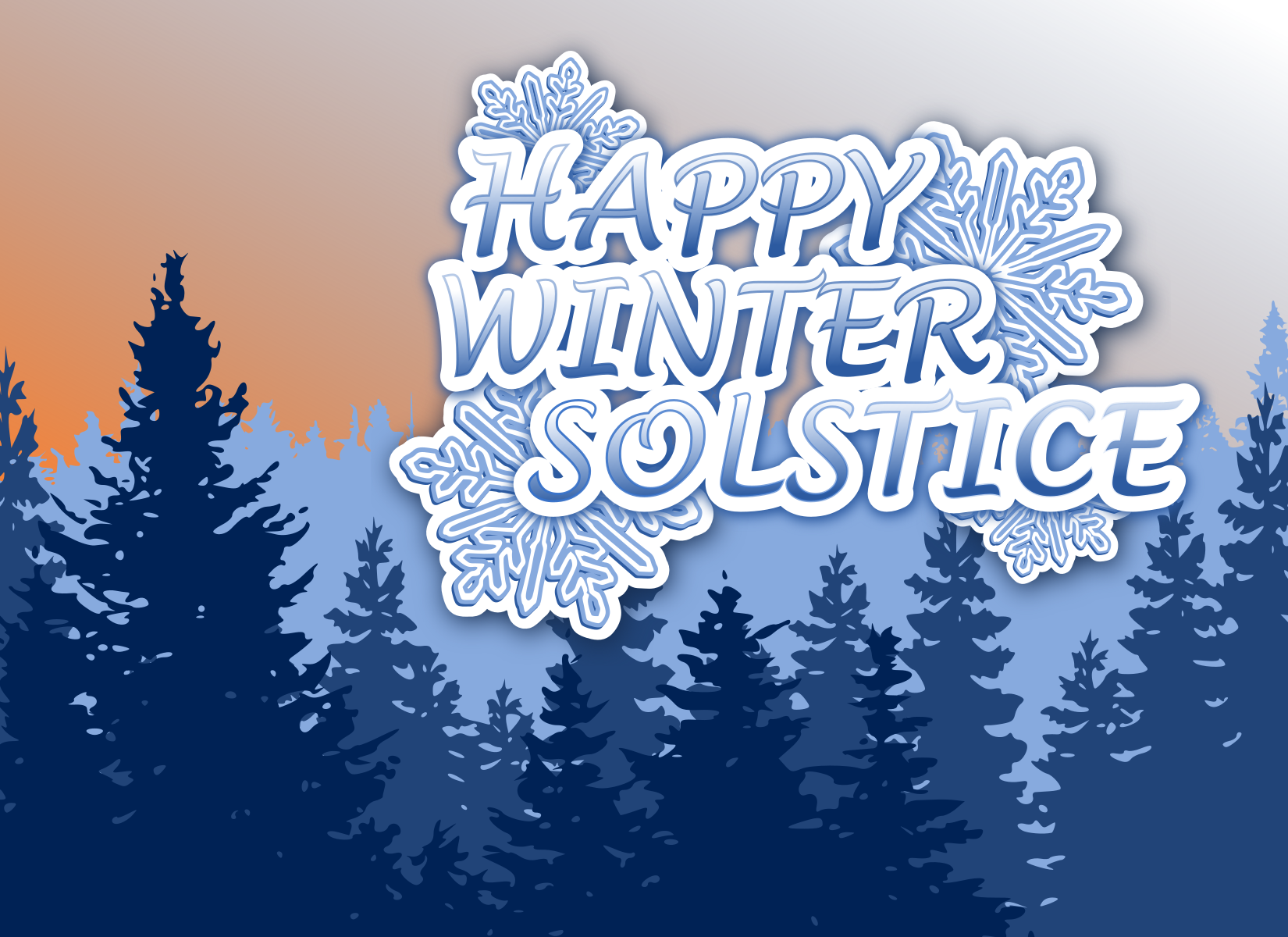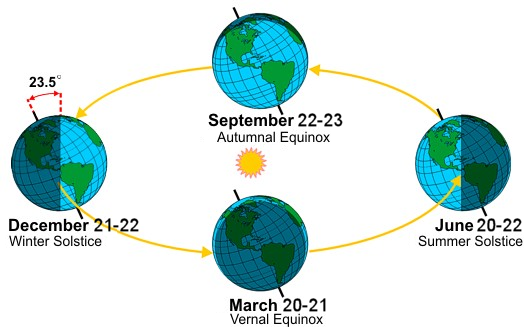
Winter has finally started to set in here at the Moline Library! Have you noticed that the days are growing shorter and shorter? Eventually, the days will start growing longer but only after one very important event: the Winter Solstice!
The Winter Solstice is known as the Shortest Day of the Year. This is because the Earth is tilted at an axis – meaning the Earth isn’t spinning up and down, but at an angle. It takes a whole year to orbit – or circle around – the Sun, so the tops and bottoms of the planet are either facing towards or away the sun as it spins. The planet spinning is what causes day and night to happen!

The Winter Solstice, also called the Hibernal Solstice, happens when either of Earth’s poles reaches its maximum tilt away from the Sun. This happens twice yearly, once in each hemisphere. So during the winter, the Northern Hemisphere, located above the Equator, gets the least amount of sunlight, while the Southern Hemisphere gets more. In the Summer it’s reversed! The solstices, together with the equinoxes – or days when there is an equal amount of daylight and night time – are connected with the seasons. In some cultures they mark either the beginning or the middle of summer and winter and are a very big deal! Because of the way our planet orbits, the solstices are not always on the same day of the year, but usually within a few days of the predicted time – usually December 21st or 22nd. This year the Winter Solstice in the Northern Hemisphere lands on December 21st. Go outside during the daytime and see how long your shadows are – they change lengths in the sun! During the summer where there’s more light, there’s less shadow. But when there’s less light, your shadow might be REALLY long!

The Winter Solstice is celebrated in most cultures as the returning of the light. In ancient times, there was no air conditioning or heating when it got cold like we have now, so people relied on fires and many layers to keep them warm during the winter. During the solstice, families all over the northern hemisphere would get together in one home to watch the rising of the sun after the longest night of the year, hold delicious feasts, play games, and light as many candles within their home as they safely could or hold bonfires outside to scare away the darkness and welcome in the Sun! This time was also called Yule in Europe, and was usually celebrated for 12 days. Because of the meaningful shift in seasons, the solstice is about rebirth and renewal, as well as celebrating the connection between nature and people. Today some of these traditions are still celebrated! You can find out more about them here!

How can you celebrate the Winter Solstice at home? Well there are tons of things to do! You could get up extra early to see the sun rise, go on a winter walk to see how the winter is setting in around your home, play in the snow, or even do some crafts! You could make:
- Snowflake Suncatcher
- Ice Suncatchers
- Orange Slice Garlands
- Snowball Lamps
- Paper Mache Leaf Lanterns
- Bird Feeders with Gelatin or Peanut Butter
You might also want to cozy up with a mug of cocoa and a nice warm blanket to read a good book! We have a ton of books on all things winter and snowy at the library, but we also have books about solstices, too! Check them out today, and remember to stay warm during the shortest day of the year! Happy Solstice!
